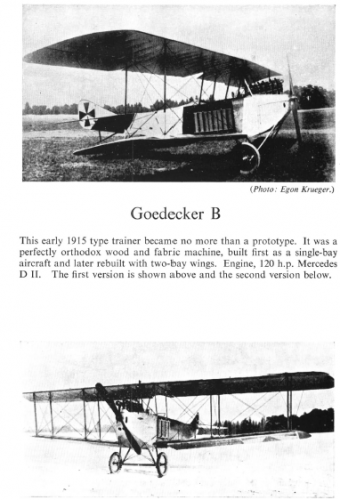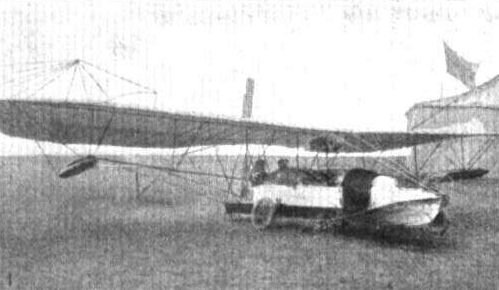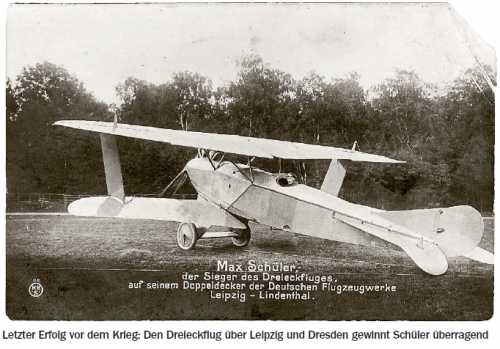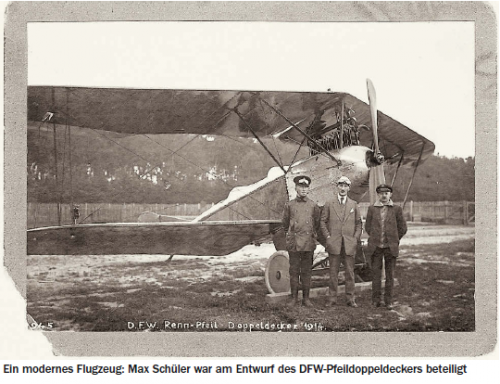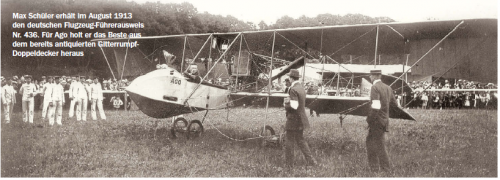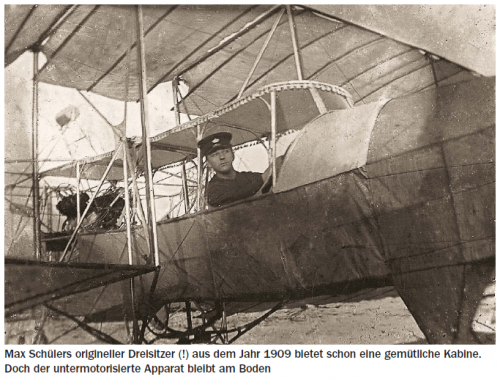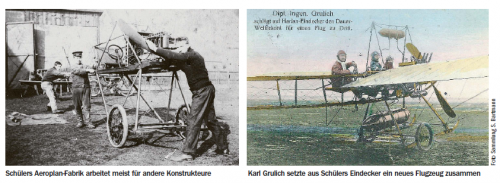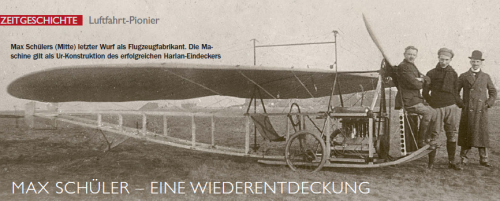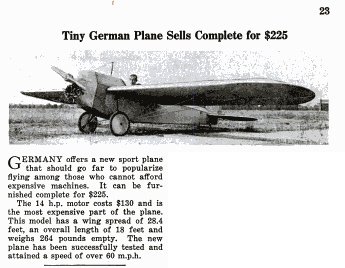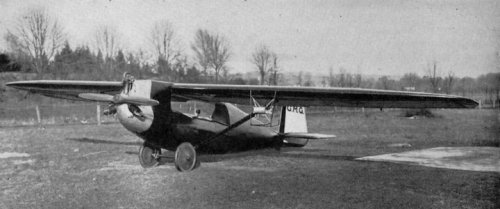The enumeration by Richard is correct. Some more information:
Max Schüler built his airplanes in Chemnitz (during his study at the Technische Hochschule), in his father's engine workshop in Berlin, and from 1910 in Johannisthal, where he had created the Max Schüler Aeroplan-Fabrik.
First designs
His first design from 1909. Three seater biplane with cabin (!). One 30 hp engine of own construction (from components of motocycle engines). Unable to fly.
Inspired by Santos-Dumont and Grade with 16 hp engine of own construction. Short flight and crash in January 1910.
Designs by others, built on order
Designed and ordered by Leo Lendner. Single engine monoplane with push and pull props. Had to be modified before it could fly. Lendner crashed to his death in it in 1913.
Designed by Philipp Dörhöfer, who worked at Flugwerk Deutschland in Aachen, but let Schüler build his design. No more information on eventual tests.
Biplane designed by Dr. Fritz Huth. One of the curious creatures of those days. Nicknamed "Huth-Krempe" (a German wordplay).
- Loutzkoy 1910 (Геликоплан)
The article in Flugzeug Classic, Aug. 2016, confirms what Lange says in his Typenhandbuch that the first Loutzkoy was built by Schüler and the second (the twin engine Taube) by Rumpler (see my posting of 30 Oct 2016 in Designations Systems / Daimler Motoren-Gesellschaft).
Own designs
Schüler had constantly financial problems, and to realise his next project (a monoplane) he got financial support from the entrepreneur Wolfgang Harlan, with the aeroplanes as guarantee. This was the end of Schülers' career as an aircraft builder. He couldn't repay the money, and all was taken over by Harlan, the beginning of an also short career.
Monoplane with 50 hp Argus. Crashed immediately.
Modified version of the former.
With 50 hp Escher.
With 120 hp Argus and steel tube construction of the fuselage.
The Max Schüler Aeroplan-Fabrik as the first in Johannistal to close the doors. Max Schüler himself began a new and successful career as a pilot for different companies. Before 1914 he became well known for a number of spectacular flights (see the three last photographs in the posting by hesham).

